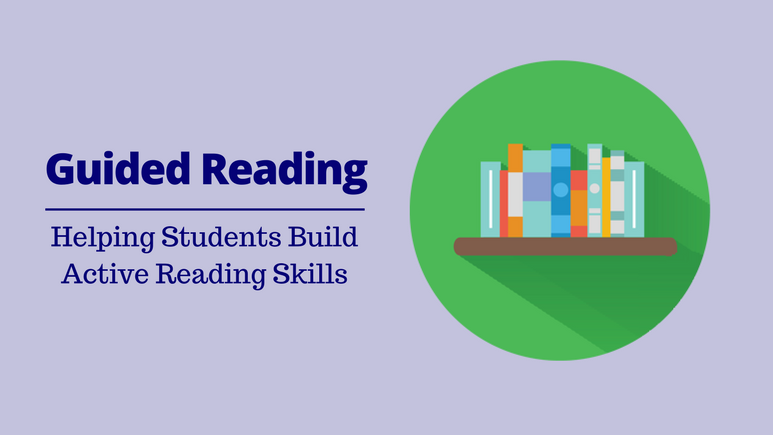
I can remember reading class in elementary school like it was yesterday.
Ms. Hopson would ask us to open our textbooks to a given page.
We would each take turns reading aloud until she told us to stop.
At the end, we would write down our answers to the questions at the end of the story.
Inspiring? Not quite. Effective? Maybe, I did learn to read after all.
Today, though, more and more teachers realize that there are several flaws with this blanket approach to teaching reading instruction. Namely, not all students are reading at the same level.
A text that is “on grade level” may be far too advanced for some readers in your room and incredibly basic for others.
So how can you give a classroom of 30 what each and every person needs when it comes to reading instruction? One way is to use a strategy known as guided reading.
Benefits of Guided Reading
The idea behind guided reading is that it differentiates instruction to better suit the diversity of learners and reading levels in your class.
Not all of your students are the same and have the same reading abilities, so why would you have them all read the same stories and books at the same time?
Guided reading allows students to practice fundamental reading skills such as making inferences and analyzing plot with a text that is at the perfect level for them.
Another benefit to guided reading is that it’s a great way to provide students with some autonomy. By giving students the space to work through a book with a small group of peers instead of as a whole class, they feel a sense of ownership over their work.
The Basics
Guided reading can be implemented a number of different ways, but there are some commonalities that most teachers use.
Students are typically grouped into teams of 3-5 students. These groups are homogenous, meaning that all students within a group have a similar reading level.
There are a number of ways to determine a student’s reading level, one of the most commonly used is the Fountas and Pinnell Benchmark Assessment System.
Once you’ve formed groups of students you’ll need to choose a text for each group that is at or slightly above their reading level. Most schools have a guided reading library with sets of leveled books, but if yours doesn’t Reading A-Z is an online resource that allows teachers to print leveled books.
Here is where guided reading implementation really branches out.
How often you implement guided reading, how much time you dedicate to this part of class and how much independence you allow students all vary depending on the age of your readers and your preferences as a teacher.
That said, there are some best practices that can make the process much smoother!
Tips for Implementing Guided Reading
Establish Clear Procedures
During guided reading you’ll be working with one group at a time, meaning the rest of your class will be left to their own devices. Sounds scary!
Minimize issues and maximize productivity by setting clear expectations and procedures from day one.
What will other groups be doing during guided reading time? What noise level should they be at? What should they do if they have a question? Lay out the ground rules early and hold kids to them.
Have Students Read Independently
Most of the reading we do in life is silent and independent. Have students practice this in guided reading.
While the group members are reading the text independently, have one student at a time whisper read to you so you can check for fluency and decoding progress or needs.
Model with a Think Aloud
Good readers don’t just look at the words on the page, they do a lot of thinking as they read.
Early readers will need guidance in what “good” reading looks like.
With lower level readers you’ll likely need to model your thought process as you read a section aloud.
What questions are you asking? What connections are you making? What do you do when you get stuck? These are the active reading skills that make good readers successful.
Don’t tell kids how to do these things – show them! Then give lots of at-bats for them to practice on their own and with their group.
Stay Organized
There are a lot of moving pieces associated with guided reading, and unless you have a plan for organization it can end up being a mess.
Milk crates or clear Tupperware containers are great for storing each group’s books and materials.
It’s also a good idea to designate a responsible student from each group who’s in charge of distributing materials and collecting them at the end of the lesson.
It takes some getting used to, but guided reading can be a great way to mix up your literacy instruction and help students grow as readers.
Do you use guided reading or a similar approach in your classroom? What tips and suggestions do you have to make this most out of this practice?
Happy reading!



Leave a Reply